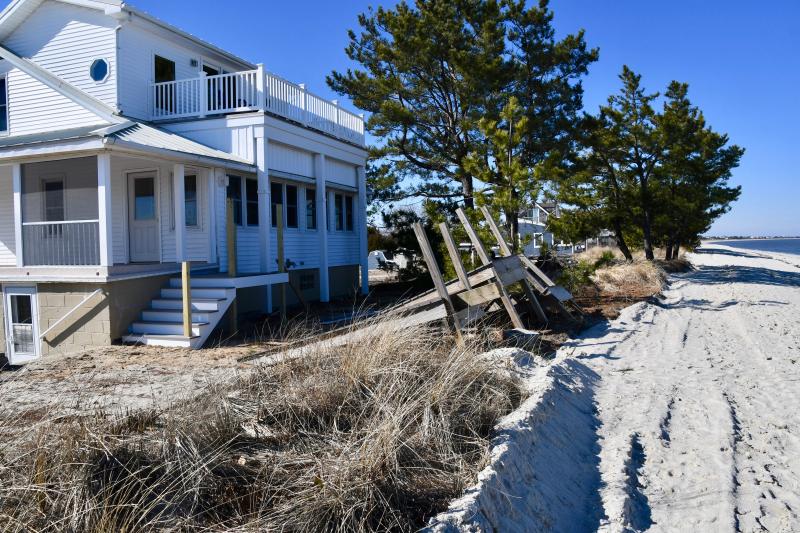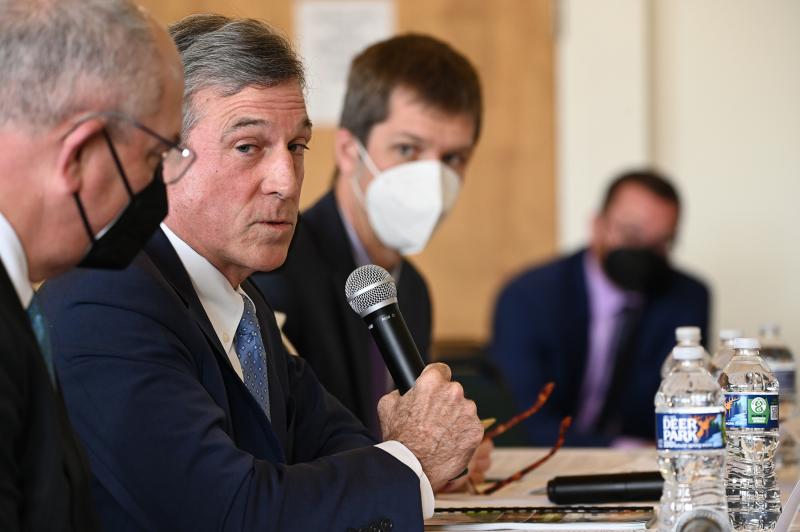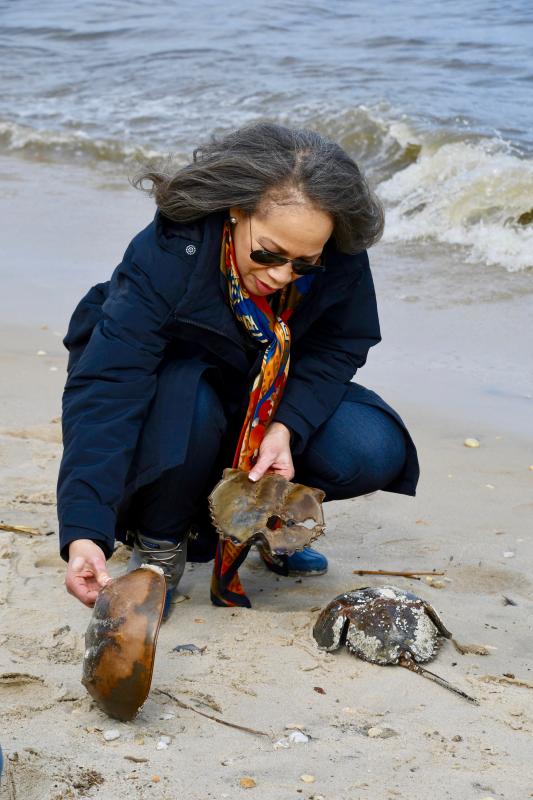Legislators highlight need to rebuild bay beaches
U.S. Sen. Tom Carper and Congresswoman Lisa Blunt Rochester (both D-Del.) toured parts of Slaughter Beach and Indian River Inlet Feb. 22 to witness how climate change is threatening Delaware’s coastline.
In Slaughter Beach, a community along the Delaware Bay, storm damage has caused major erosion of the beach and protective dunes.
Although there are currently no federal funds available to replenish Slaughter Beach, Carper and Blunt Rochester are sponsors of an act that could provide funding for replenishment projects in coastal areas.
The U.S. Army Corps of Engineers plays a critical role in providing shoreline and riverbank protection. To help the Army Corps address these challenges, Carper and Blunt Rochester introduced the Shoreline Health Oversight, Restoration, Resilience and Enhancement Act earlier this month.
The act designates the Delaware Bayshore beaches as a U.S. Army Corps of Engineers priority area; allows emergency repair of dunes and wetlands if the cost is under $23 million; and allows the corps to use a different, more efficient, and cheaper borrow source for Delaware Bay beaches.
Slaughter Beach Mayor Kathy Lock told the legislators that an Oct. 29, 2021 storm did extensive damage, and Delaware Department of Natural Resources and Environmental Control crews hauled in 15,000 cubic yards of sand to rebuild a section on the south end of the beach.
“But this is clearly a band-aid and not a long-term solution. This beach needs a lot of help. We will do whatever we can to get this [act] over the finish line,” she said.
The mayor added that Slaughter Beach is among several coastal beaches in Delaware that are a critical habitat for horseshoe crabs that spawn on the beaches each year.
“It's clear the planet is warming and sea levels are rising. The question is, what do we do about it? We are working on that,” Carper said.
Carper, the top Democrat on the Environment and Public Works Committee, said, “How can we help small communities like Slaughter Beach to meet the challenges of sea-level rise? This legislation will create a method for the Army Corps to do that.”
Carper said the state and federal governments spend a lot of money replenishing the beaches in key resort areas such as Rehoboth Beach, Dewey Beach and Bethany Beach. “But we don't spend so much here. Now we need to focus on resiliency and replenishment,” he said.
“Today’s visits to Slaughter Beach and Rehoboth Beach made clear that Delaware’s coastlines continue to bear the brunt of the effects of climate change,” Blunt Rochester said. “It’s critical that coastal communities in Delaware and across the country have the resources they need to restore their shorelines, mitigate the effects of climate change, protect wildlife habitats and safeguard their local economies.”
“Coastal communities are working around the clock to protect their homes, businesses and essential infrastructure from the growing threat of climate change, but they can’t do it alone,” Carper said. “Today, we saw these impacts firsthand, and discussed how the federal government can do a better job of helping our state and local governments build their infrastructure in a more resilient, forward-thinking way.”
Carper and Blunt Rochester were joined by DNREC Secretary Shawn Garvin, as well as Maj. Gen. William “Butch” Graham, deputy commanding general for Civil and Emergency Operations of the U.S. Army Corps of Engineers, and Lt. Col. Ramon Brigantti, district commander for the Philadelphia District of the U.S. Army Corps of Engineers.
$43 million project at inlet
The entourage then traveled to Indian River Inlet, where $43 million from the federal Infrastructure and Jobs Act will be used to provide upgrades and repairs to the area around the inlet.
“We can now face the challenges here, and protect Route 1 and the inlet bridge for years to come,” Carper said.
“Water levels are coming up faster than before and we could see 1 to 2 feet of sea-level rise in the next 50 to 60 years,” said Graham.
“We will do this project accounting for that, and make sure we get the engineering right. This $43 million investment ensures that this inlet continues to serve the great state of Delaware,” he said.
Graham said one of the immediate needs is to repair and replace a section of the north jetty where a 100-foot hole has formed. “We knew it would be a big lift to make this right,” he said.
Blunt Rochester stressed the importance of the inlet as the only access to the Atlantic Ocean for a Coast Guard station on the inlet, and recreational and commercial fishermen.
“Let us be clear that we have only just begun, because there are so many areas we need to tackle,” she said.
During the visit to Indian River Inlet, Carper highlighted another challenge to be met – to repair the sand-bypass system that pumps sand from the south side to the north side of the inlet where beach erosion occurs. About 100,000 cubic yards of sand are pumped each year across the inlet in a pipe attached to the inlet bridge.
Garvin said saltwater damage has taken a toll on the system, and repairs are needed. He said trucked-in sand and dredge material are currently being used while the system is down.
































































